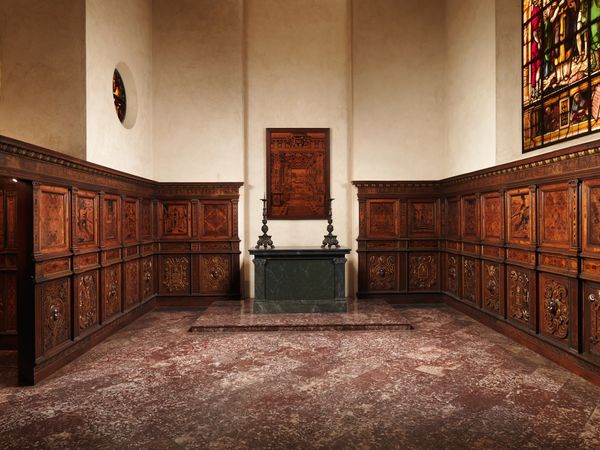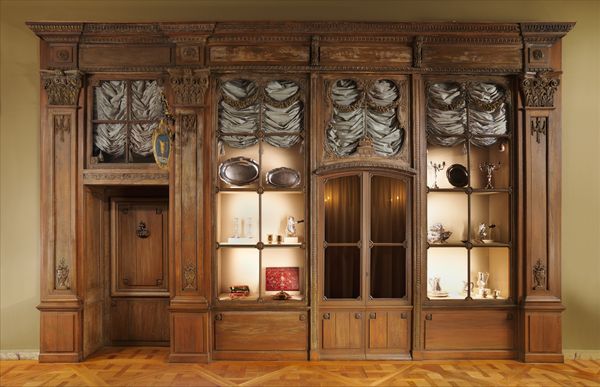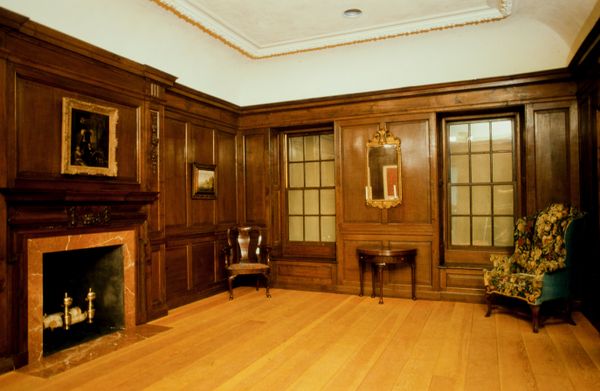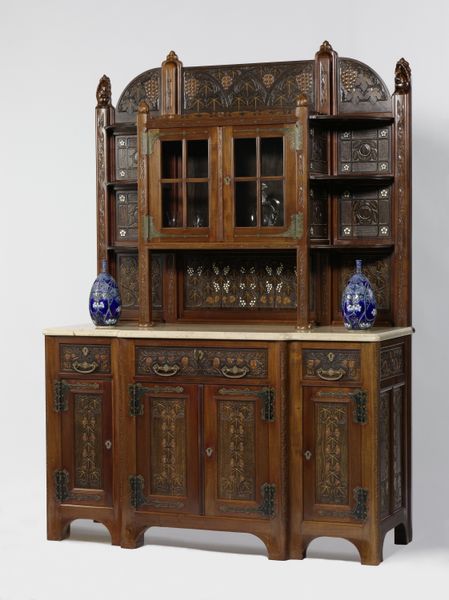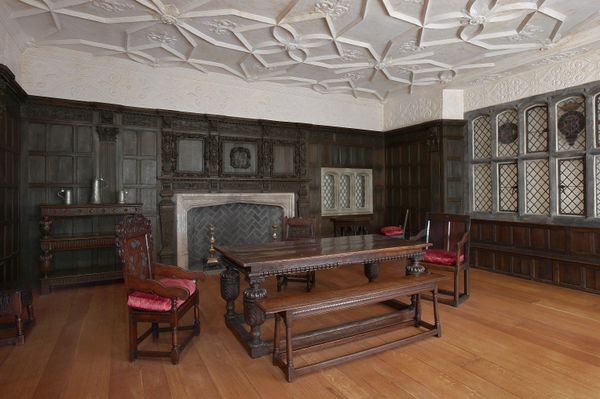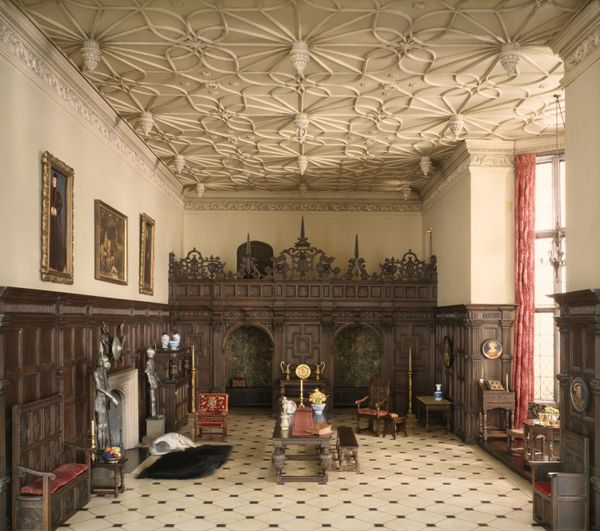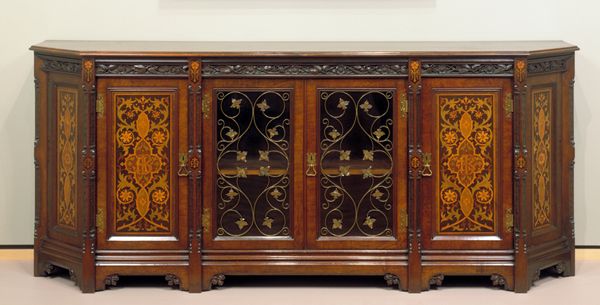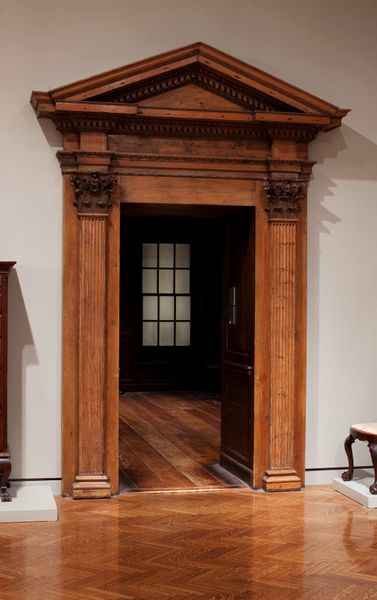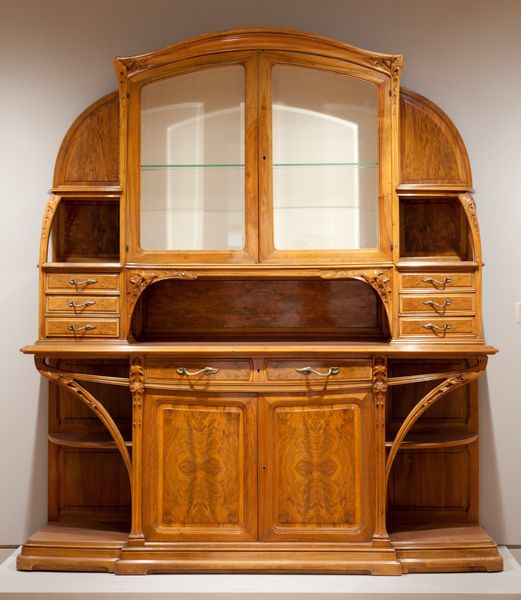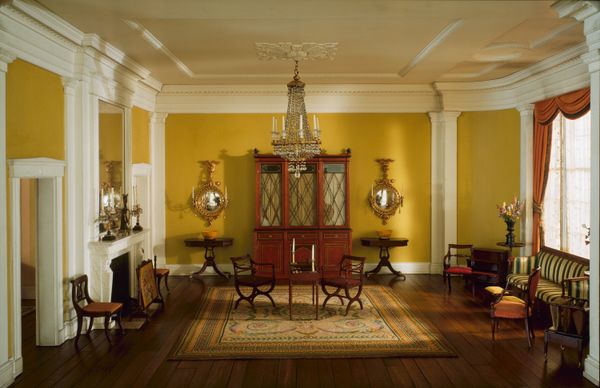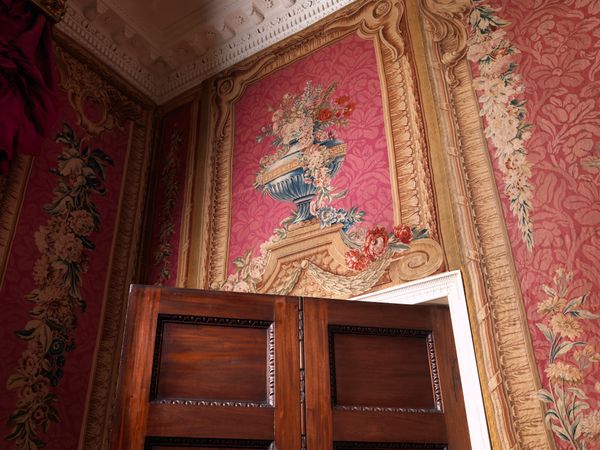
Studiolo from the Ducal Palace in Gubbio 1473 - 1487
0:00
0:00
carving, sculpture, wood, architecture
#
interior architecture
#
carving
#
book
#
bird
#
11_renaissance
#
sculpture
#
arch
#
men
#
wood
#
musical-instrument
#
decorative-art
#
italian-renaissance
#
architecture
Dimensions: H. 15 ft. 10 15/16 in. (485 cm), W. 16 ft. 11 15/16 in. (518 cm), D. 12 ft. 7 3/16 in. (384 cm)
Copyright: Public Domain
Curator: This is the Studiolo from the Ducal Palace in Gubbio, created between 1473 and 1487. It's attributed to Francesco di Giorgio Martini, a fascinating example of Italian Renaissance decorative art. Editor: It feels like stepping into an illusion, a beautifully crafted cage almost. The wood grain creates such strong directional lines. It draws you in. Curator: Precisely. The intarsia, or wood inlay, is meticulously designed to create the illusion of depth. Notice how the panels depict shelves filled with objects—books, instruments, scientific tools—evoking a sense of intellectual pursuit. The craftsman elevates simple daily utilitarian things using perspective. Editor: And the choice of wood is so crucial here. I’m curious about what types were used, the labor involved in sourcing and preparing them. It's not just the design, but the very material that lends this studiolo its unique atmosphere. It's warm but also austere in how rigidly everything aligns into orthogonal perfection. Curator: The orthogonal perfection speaks to the Renaissance ideals of order and harmony. Each element, from the inlaid figures to the architectural details, contributes to the overall sense of balance and proportion, a microcosm of the Renaissance worldview itself. Note also the subtle color variations created using the different wood. Editor: And who exactly were the artisans involved? I bet there was more than one artist. I mean, whose labor produced this elaborate room, transforming raw materials into this enclosed space of learning and status? The objectified accumulation on the shelves feels so class-based. Curator: Certainly, uncovering those stories would reveal even deeper dimensions. As for the visible, the play of light and shadow across the surface really does lend the Studiolo a vibrant and ever-changing appearance. Editor: This work makes me appreciate how deeply social relations affect materials in the world and how profoundly materials affect social relations. It reminds us that luxury is in many ways built into exploiting materials. Curator: A fitting way to encapsulate the duality present in this exceptional period of artistry. I see how studying the production unveils as much, or even more, than examining the outcome. Editor: Indeed, this Studiolo offers an example of how the aesthetic and economic merge into Renaissance society and ideology.
Comments
No comments
Be the first to comment and join the conversation on the ultimate creative platform.
